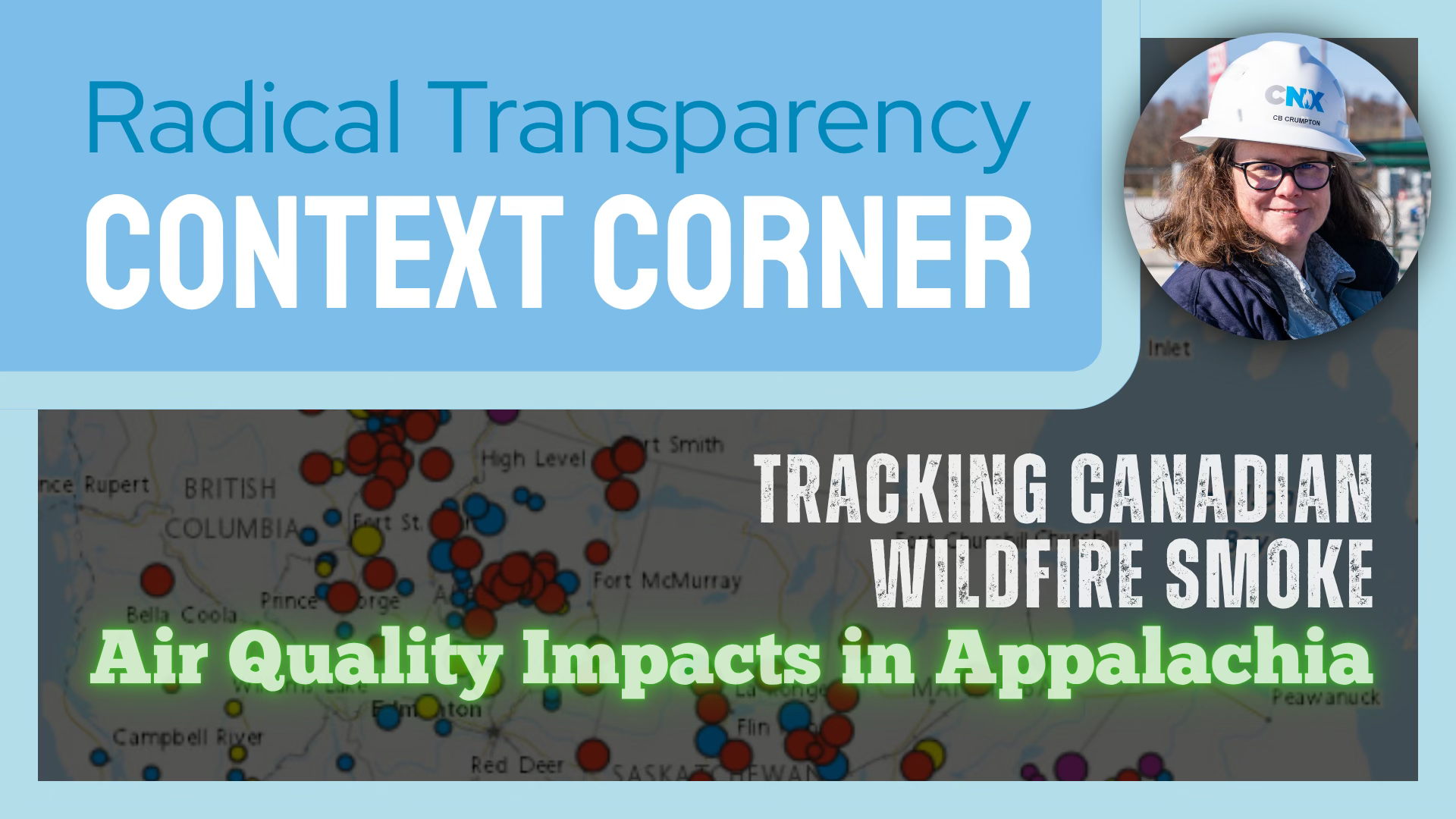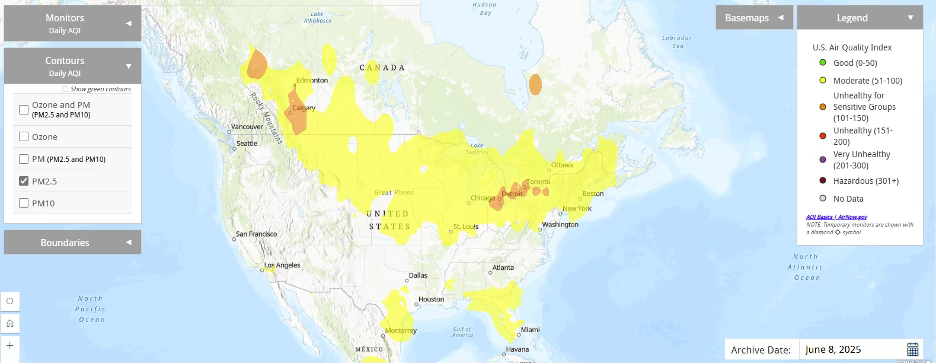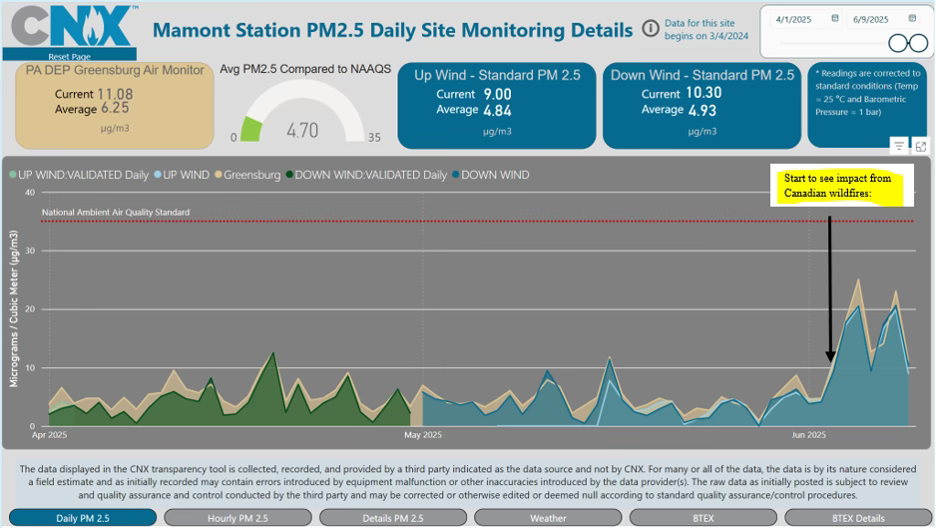Tracking Canadian Wildfire Smoke: Air Quality Impacts in Appalachia
Context Corner Edition 12
June 18, 2025

By Carrie Crumpton, CNX Vice President of Environmental Strategy
CNX is actively tracking the impacts of Canadian wildfire smoke on air quality as reflected in our monitored data. Large wildfires are currently burning across several Canadian provinces, including British Columbia, Alberta, and Manitoba. Because wildfire smoke can travel large distances and is a prominent source of PM2.5, these wildfires in Canada can substantially impact air quality hundreds of miles away, including in Appalachia. We observed this in 2023, and it is occurring again now.

Here are a few articles about the impacts on Southwestern Pennsylvania thus far:
- Canadian wildfires again bringing smoke, haze to Western Pa. | TribLIVE.com
- More Canadian wildfire smoke heading toward Western Pennsylvania
- Canadian wildfire smoke to linger over Western Pa. | TribLIVE.com
How the Wildfires are Impacting Radical Transparency Data
On the Radical Transparency website, the PM2.5 concentrations from our on-site monitors are compared to PM2.5 concentrations from regional PA DEP monitors. Due to the Canadian wildfires, data from both our monitors and the PA DEP monitors show elevated hourly and daily PM2.5 concentrations.

Although the PM 2.5 monitors are showing elevated readings, the contribution from our sites has not increased.
The contribution measurement uses the wind direction to determine an upwind and downwind concentration, representative of the conditions before and after the site, respectively. The upwind concentration is subtracted from the downwind concentration, resulting in the PM 2.5 level attributable to site activities.
Throughout the Radical Transparency program, contributions from our sites have remained low and continue to do so. For more information about contributions measured as part of the Radical Transparency Program, please see Clean Air Engineering’s recent presentation at the 2025 Air and Waste Management Association Air Quality Measurement Conference.
Recent rain has led to a decrease in PM2.5 concentrations. However, as weather patterns shift and wildfire activity changes, we may see elevated PM2.5 concentrations over the next few days. If you are interested in seeing this reflected in our data, please visit our Radical Transparency website.
Latest Context Corner:



